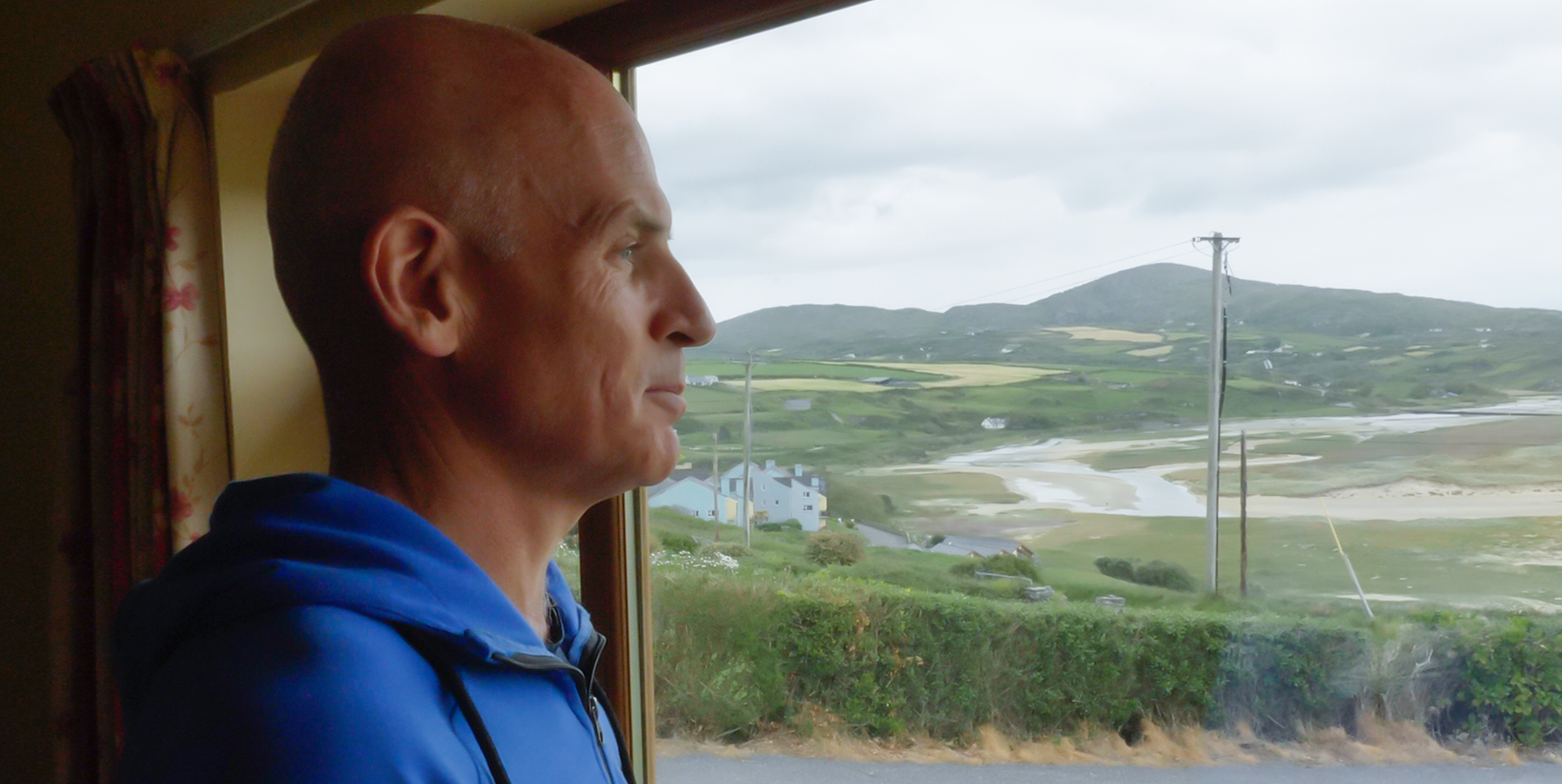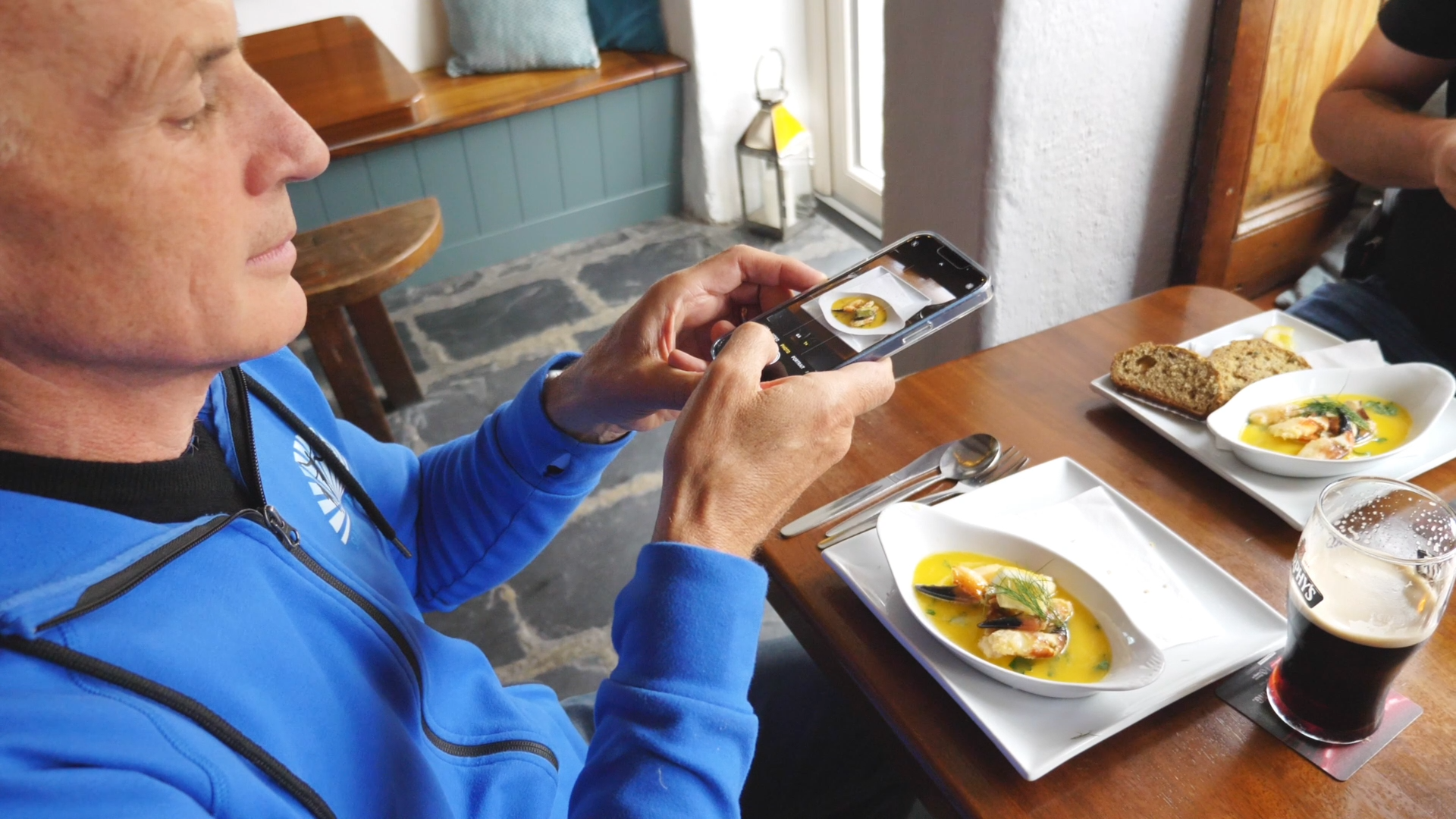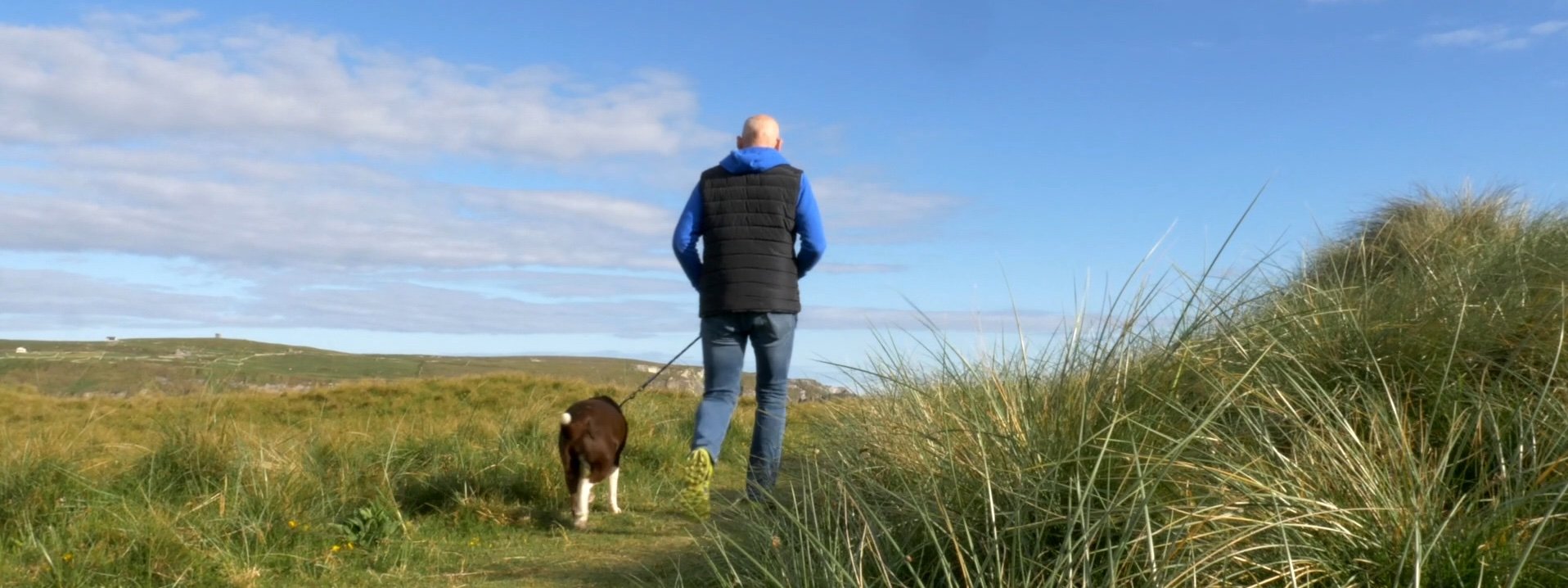
John's revolution: 15kg lost and a brighter future
“Whenever I get involved in something, it’s all in,” says John Riordan. When he started running, he began planning how to tackle a marathon. When he took up cycling, he began looking for a crazy, 14-day cycle trip that could be the pinnacle of his training.
It’s an obsession that stems from his childhood being involved in sport. “I was lucky enough to be reasonably good at one or two sports,” he says. “You always think of the Cup final, of what's the big game at the end of the season.”
A change in plans
Endless success in the sporting world wasn’t to be for John. He had to stop high-level sport in his mid-20s due to an arthritic condition. To fill the gap and to be seen to be doing something – to occupy his mind and to sate that desire to excel – he swapped out sport for work. Until “probably my early 50s, work became a very significant and obvious priority,” he says. He got into banking after a college degree, and hated it. Within a year, he’d moved to sales. He wasn’t good at it, and felt as if he’d struck out twice in picking the right job – so he moved on, emigrating to the US.
“I had the opportunity to go live in a new country and be somebody completely different,” he says. “I wasn't the guy who played sport. I wasn't the guy who was from a relatively small town. I was just anybody who was in the States.” He got into the aviation business, running a frequent flyer programme for one of the major American carriers, then began running the operations side of Virgin Atlantic’s airline business in the United States in the late 1990s and early 2000s.
Serious illness
From there, he moved to Apple, but the constant drive became something that shifted from a motivator to a demotivator. In his early 50s, John suffered severe burnout. Two-and-a-half years ago, he had a stroke. Laying in bed in a neurological hospital ward, he had a moment of reckoning. “Outwardly I looked extremely fit and healthy,” he says. “But clearly, what you see externally is not necessarily mirrored internally.”
John began thinking back four years earlier when his father passed away at the age of 76. He was the longest-living male in the Riordan family. “I thought to myself, ‘Hang on, I'm 55. And he passed away at 76. From a gene pool perspective, on average, I'm going to get another 20 or 21 years.’” John began wondering: “How do I beat the averages?”
The stroke John suffered was comparatively minor. He didn’t require invasive surgery, and recovered the full use of his body. But he was left on a litany of medication: “blood thinners, cholesterol meds, and blood pressure meds, and what they tell you is it's essentially for the rest of your life,” he says. He didn’t feel comfortable facing taking those medications forever. A thought kept nagging at the back of his mind: “Surely there's a way in which I can actually live my life in a better and healthier manner.
A gradual decline
He began returning to exercise to try to improve his overall health. “I got back running and I was feeling great,” he says, though he eventually had to give it up. “The knees were getting a little bit rocky,” he admits, “probably a 75-year-old’s knees on a 55-year-old’s body.” He’d lost discipline with what he ate and drank immediately after his stroke, and while he was still among the fittest in his friendship group, he knew he wasn’t as healthy as he could be. His weight kept inching up, and plateaued around the 100kg mark. “I noticed that my 34-inch waistbands were becoming 36s,” he says.
He wasn’t keen to lose drastic amounts of weight, but he wanted to change his life – and lifestyle – for the better.

Taking back control
The moment came when he ran into a friend. “I got into a casual conversation with somebody who I hadn't seen for a couple of months,” he recalls. “And I noticed that he looked considerably fitter and healthier than the previous time that I saw him. I said to him: ‘What are you doing?’ And he said, ‘Oh, I'm involved in this programme.’ And he started describing this programme to me.” It was Limbo.
John enrolled in Limbo’s beta programme in January 2022, wearing a continuous glucose monitor. “15 or 20 minutes after eating, I would see what this food is doing to my blood glucose level,” he says. “I never seen that before.”
It was a revelation. “I must have three dozen, four dozen health apps of different shapes, sizes and formats on my phone – fitness apps, and this, that and the other,” he says. “But I've never seen anything that was as simplistic as this. It’s complex in one way, because it's taking a blood reading, but is simple in terms of here's the guardrails. So, for me, that's what it just boiled down to: keep within the guardrails and you will be a lot better.”
Seeing the results
Within a week, John noticed significant changes. The weight began to fall off. He stopped taking naps. “I'm not climbing up to bed, really shattered at the end of the day, I just don't feel like that,” he says. “My energy levels are quite different.” Encouraged by Limbo, he’s cut out unnecessary sugar in his diet, realising he sleeps better, snores less, and works out better.

When John started with Limbo, he weighed 101kg. “Today, I’m at 86kg,” he says. “That’s a 15% weight loss. I feel less pain in my knees now.” He wears 32-inch trousers, and has plenty of room in every belt he owns. “My Apple Watch has gone down one notch,” he says.
But it’s a more meaningful change that John hopes Limbo can give him. “When I had a stroke two years ago, I genuinely thought that I'd struggle to get to my late 70s,” he says. “But I'm now very much focused on looking after myself and focusing on health management. In a very short couple of months, I'm feeling better than I would have expected to feel. So I have every estimation, and every level of encouragement, that it's going to get better.”